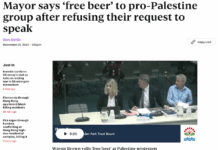
One third of all current cases in Aotearoa New Zealand are in children and teenagers, Director-General of Health Dr Ashley Bloomfield revealed at today’s update on the omicron covid-19 outbreak.
Dr Bloomfield gave an update on the omicron outbreak and was joined via Zoom by University of Otago’s Professor Peter McIntyre from the department of women’s and children’s health.
Dr Bloomfield said 14.4 percent of current cases of covid-19 were aged under nine and 17.4 percent were between 10 and 19.
- READ MORE: Covid-19 update: 22 further deaths, 15,250 new community cases, 830 people in hospital
- Other NZ covid outbreak reports
The Ministry of Health reported today there had been 15,250 new cases of covid-19 in the community and 22 more deaths.
Professor McIntyre said that even though omicron was less severe, because there were more cases, health professionals — particularly in Auckland — were seeing more cases in tamariki.
He said early evidence from the US showed that in a group of 1000 children, those who had two doses of a vaccine had a statistically significantly reduced chance of getting an infection, but it was not as high as they had hoped.
Another study looking at 10,000 children turning up at an emergency department found that two doses cut back emergency department presentations more effectively — by about 50 percent.
He said the vaccine for 5-11 year olds was an insurance policy worth taking up.
Random selection
From late January, text messages had been sent to a random selection of the parents of vaccination children, Dr Bloomfield said.
“For the first vaccination, there were 800,300 respondents and very similar to the Australian data 18 percent reported some sort of side effect post-vaccination. For the second dose the equivalent figure was 24 percent,” he said.
“Most common were reaction at the injection site, headache and fatigue. All expected and commonly reported side effects that pass quickly.”
Less than half a percent for both first and second dose had any need to seek medical advice or care, he said.
Dr Bloomfield said the rates of paediatric vaccination were similar to what was happening in other places in the world.
Dr McIntyre said there were two major issues: access and parents who were not yet convinced
“I think we need to keep pushing the notion, particularly about the safety of the vaccine.”
Comfortable with vaccine
Parents are reasonably comfortable with the vaccine but some indicated they were waiting a month or two for the safety data, Dr Bloomfield said.
“We can really reassure parents this is a really safe vaccine for children.’
By far the most common locations for children getting vaccinations was a local pharmacy and a local GP, Dr Bloomfield said.
On vaccination post-covid infection, Dr Bloomfield said they were recommending a wait of three months from the date someone tests positive. This stood for all age groups and all stages of vaccination and all vaccines.
It has been nine weeks since omicron was first recorded in New Zealand and cases have peaked nearly everywhere but, with the wave roughly moving south, rural Southland looks to be last in line.
Canterbury has become the country’s covid-19 hotspot, with the rates of new infections.
Despite that, epidemiologist Professor Michael Baker believes Canterbury and South Canterbury appear to have passed their peaks.
This article is republished under a community partnership agreement with RNZ.












































